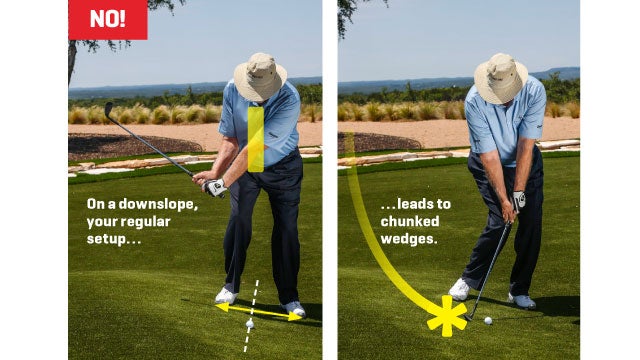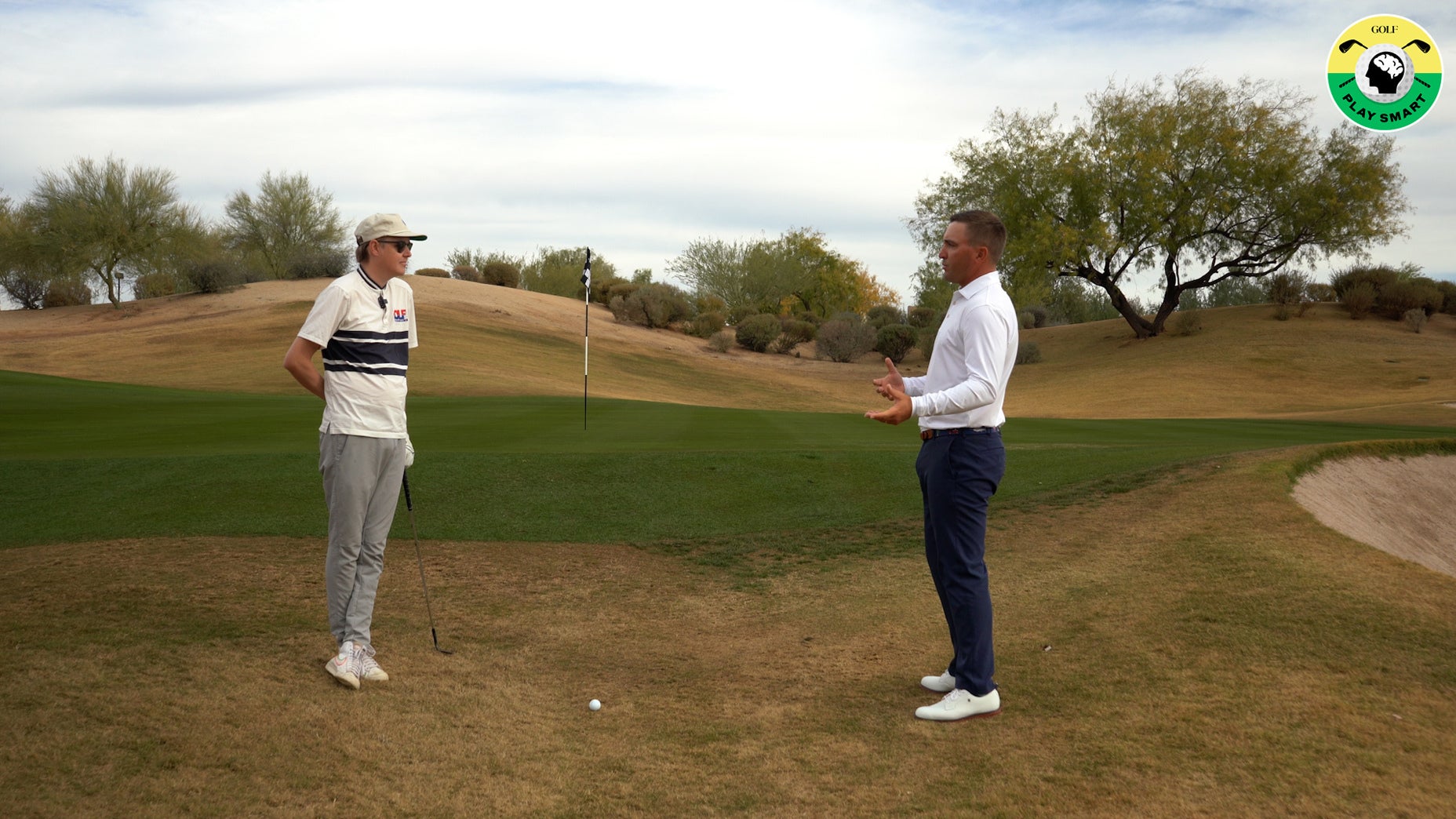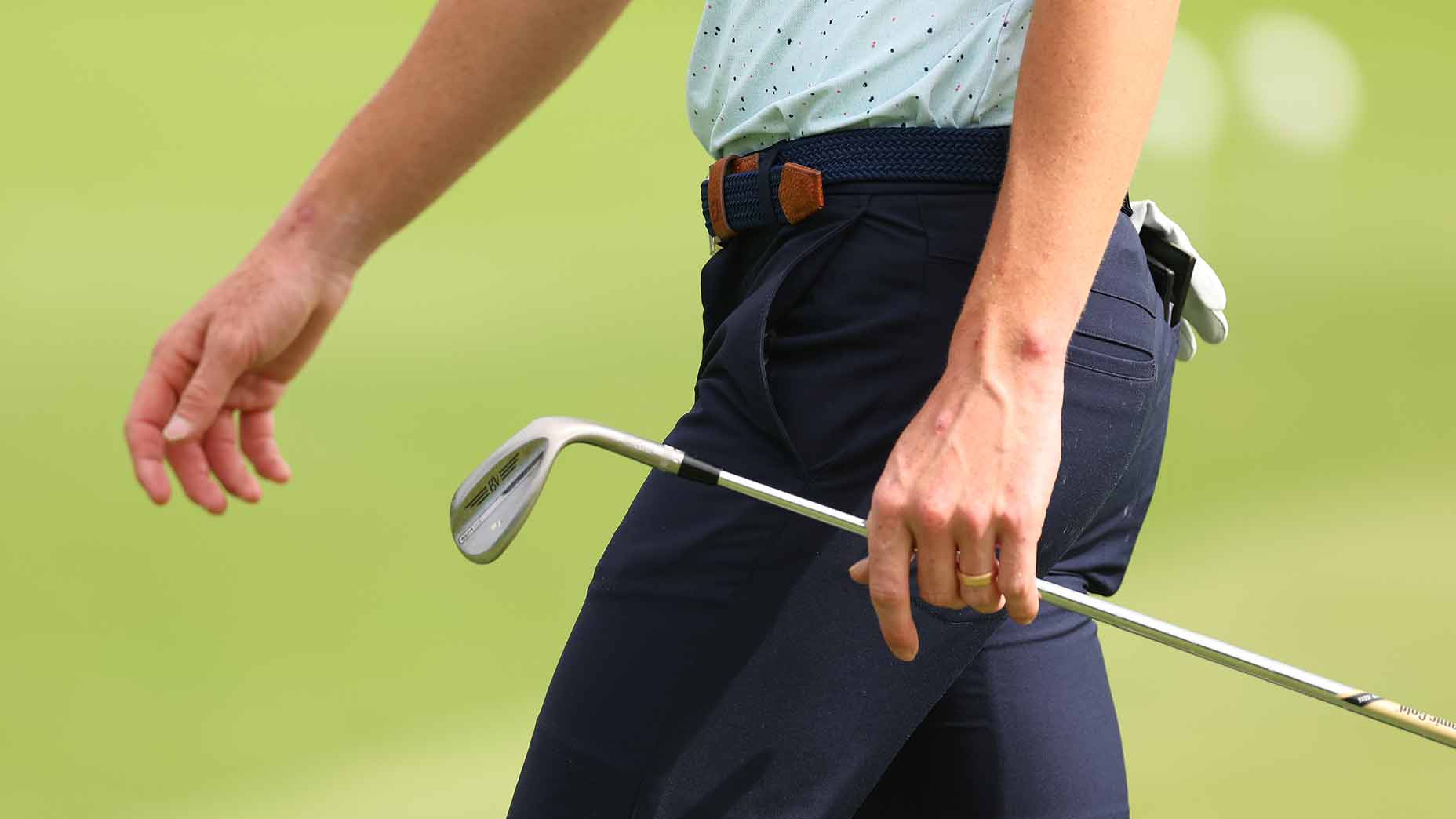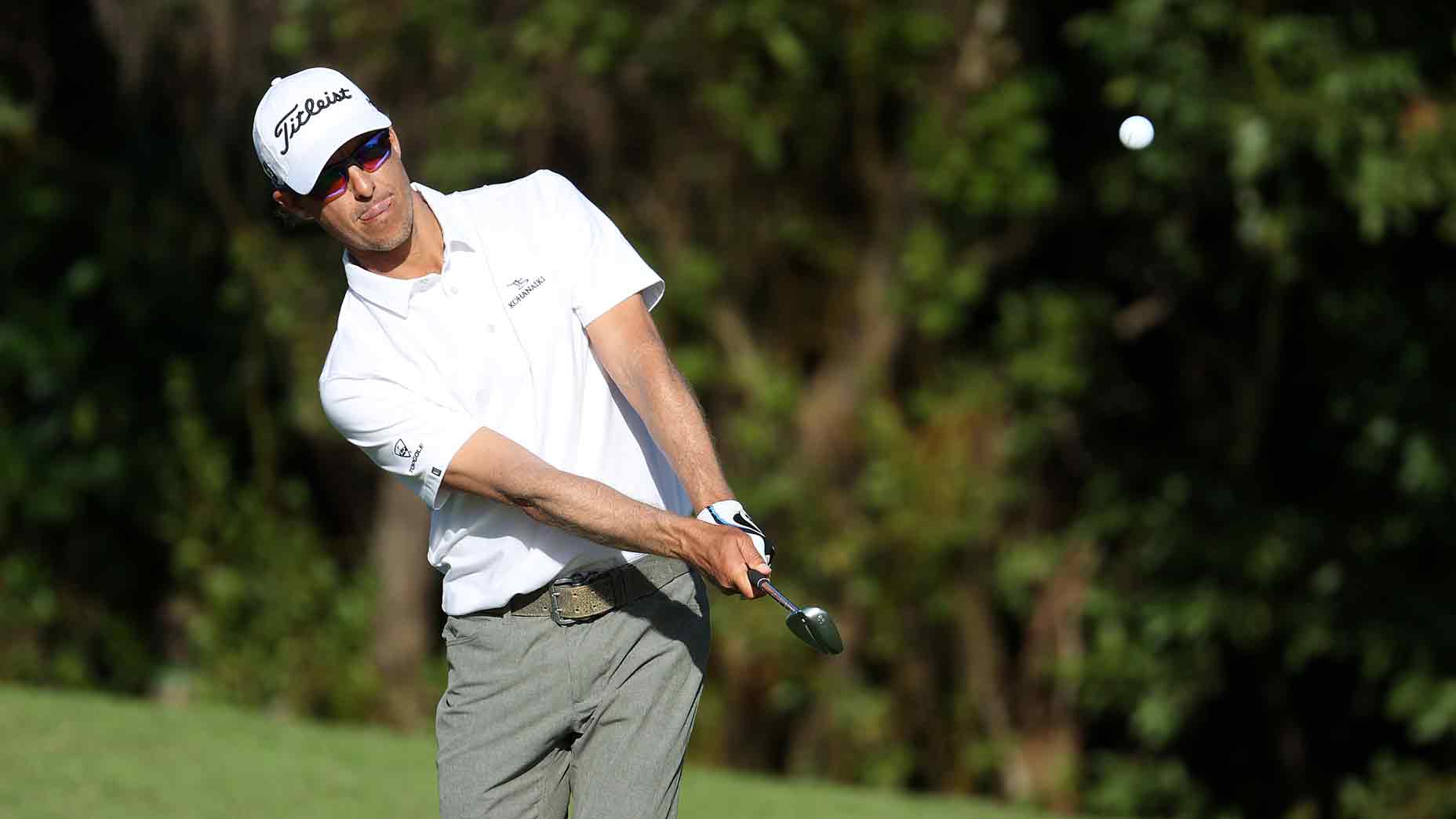There’s practice — and then there’s productive practice. In the former, you’re grooving proper technique while hitting from flat, perfect lies on the range. Hey, I’ll give you an A for effort, but here’s the thing: Flat, perfect lies are rare on the course. Moreover, setups and swings that work on these “normal” lies often don’t from tricky ones. Without gaining practical experience (that is, matching your swing to specific on-course scenarios), you’re wasting time.

Case in point: hitting a wedge from a downhill lie. Tricky? You betcha. In fact, Tour pros consider the third shot into the par-5 15th at Augusta National—a downhill wedge over water to a slender, super-slick green—to be one of the toughest third shots in golf. If you use your normal setup for this shot, or any wedge shot from a downhill lie, you’re asking for a chunk. For proof, check out the top sequence of photos (above). I’ve taken my normal setup—my feet close together, the ball just back of center, my spine straight up and down—for a 40-yard wedge shot. My swing looks good on my backswing, but because the ground behind the ball is higher than the ground in front of it—and because I haven’t adjusted for the tilt—my swing bottoms out well behind the ball. If this was No. 15 at Augusta, the ball would go plop into the pond fronting the green.

This sequence of photos above shows the proper adjustment of my standard 40-yard wedge swing for a downhill lie. Notice how I’ve moved my front foot about 10 inches toward the target, creating an extra-wide base that effectively positions the ball way back in my stance. And since I’ve “stepped” down the hill, my spine tilts to the left, and my shoulders end up parallel to the slope. This adjusted setup lets my swing bottom out at the ball, not behind it, without altering my normal backswing (my arms, hands and clubhead are in the same position in both backswing photos). I merely have to stay down through impact to hit a solid shot. (Leaning forward tends to deloft the club, so go with a higher-lofted wedge when facing this situation on the course.)
The lesson? Don’t just practice your swing. Practice shots from a variety of challenging slopes. As for downhill wedges, you’ll soon start turning these formerly frightening shots into birdie chances.
For more news that golfers everywhere are talking about, follow @golf_com on Twitter, like us on Facebook, and subscribe to our YouTube video channel.







